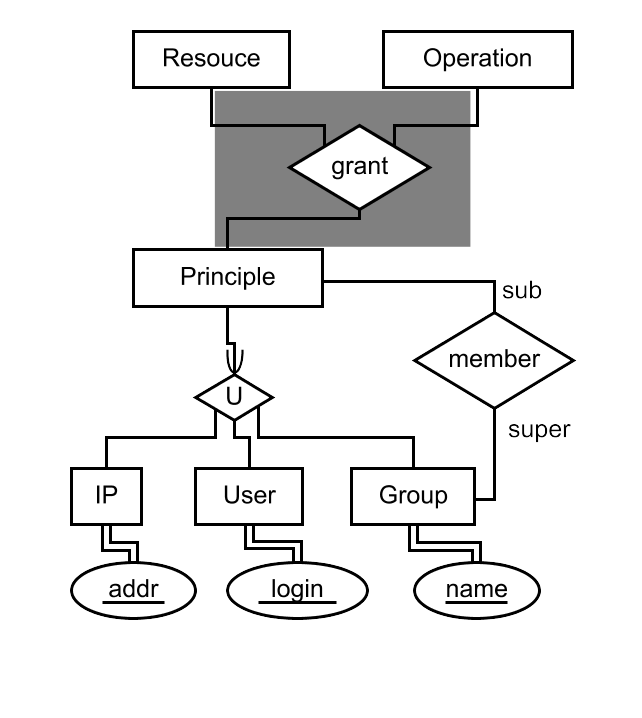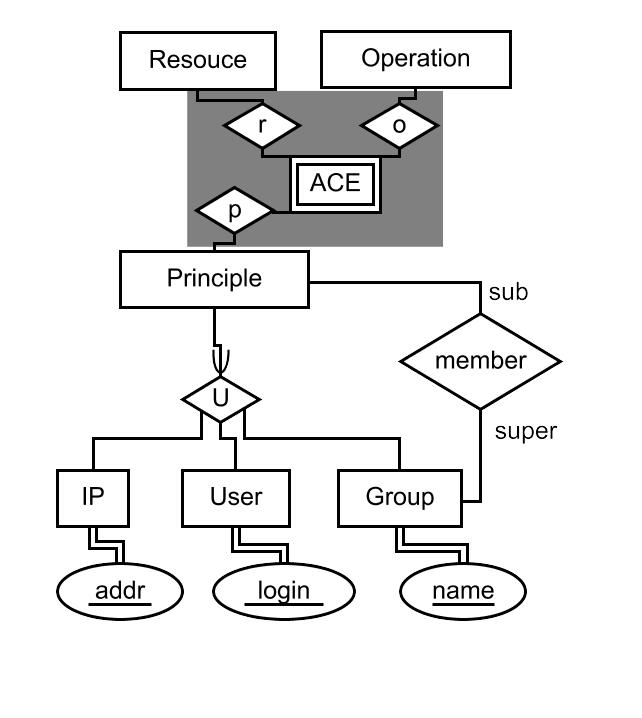This is a skeleton of ideas for paper for WWW2003.
This paper will focus on an example data modeling problem, W3C website access control. This model will be described in ER diagrams, ORM (Object Role Models)MOF (UML), XTM (XML Topic Maps) and RDF.
ER diagrams describe, as you might expect, relationships between entities. Entities in this sense are not related to either HTTP entities and XML/SGML Entities.
A common path for creating an Entity Relationship diagram is a follows:

When confined to using binary relationships, the trinary grant relationship is replaced with an ACE (Access Control Entry) entity. This entity represents the decision to grant resource access to a particular entity. Frequently, constraints that were hidden in relationships of degree higher than two will be revealed in enititizing (reifying?) them. In this case, it makes no sense to grant GET access to the same principle for the same resrource more than once. This is revealed in the fact that principle, resource and opperation form a minimal superkey (a key that maintains uniqueness through the values of each of its attributes) for the newly created ACE entity.

ORM is another graphical modeling format aimed at understanding by lay-people while serving the rigor requirements of those responsible for instantiating the model. ORM does not assign attributes as the introduction of an attribute to a relationship forces it to be re-coded as an Object (Entity).

The Object Modeling Group specified a MOF and CWM for
ER relationship diagrams allow representation of N-ary relationships. Of the above modeling technologies, only Topic Maps allow direct modelling of relationships of more than 2 entities.
Vague impressions: ORM, ER and UML express consistency and data validation. Topic maps seem content to accurately express knowledge and do nothing with it. Terry Halpin's "Business Rules and Object Role Modeling." touches on schema transformations. More at ORM website?
/usr/local/j2sdk1.4.0/bin/java -jar /usr/local/batik-1.1.1/batik-svgbrowser.jar *.svg &